The Secret(s) to Getting Through Long Papers
By Sophie, a Writing Center Coach
It’s the beginning of the semester—meaning, as a graduate student, it’s time for me to get back into the groove of planning and writing long papers. For me, the hardest part of approaching a paper is coming up with a topic that will stay interesting to me throughout the research and writing process. A good example of this is from the end of last semester, when I found myself dreading the final paper for my archives class. We covered so many interesting topics in the class, it was hard to decide which one to choose.
In my experience, a bad topic can make the writing process feel infinitely longer and more stressful. As I thought about my archives paper, I worried about finding something that I could focus on for 12 pages. So many of the topics in my class felt interwoven, and I was afraid it would be hard to pick out one thread. If I try to start a long paper without planning, I’ll end up staring at the same sentence or paragraph for hours, trying to figure out what I could possibly say next.
So, when I finally had to commit to a topic, I decided to break down the process into a few fun steps. Dividing it up helped take away some of my worries and made the process easier because I only had to do one step at a time. Here’s how I got started:
1) Create a real brainstorming session
First, I decided to meet up with a few of my friends who were also in the class. We went to a coffee shop we all like, and we brought our notes and readings from the class. None of us had a concrete idea about what to write; we just wanted to throw some possibilities out to see how other people would react to them.
We started by talking about some of the things we found funny or interesting in previous class discussions. As we talked, we found natural points of disagreement and interest. I took notes about points that stuck out to me. At the end of the conversation, I had a document full of questions and arguments that I wanted to explore further.
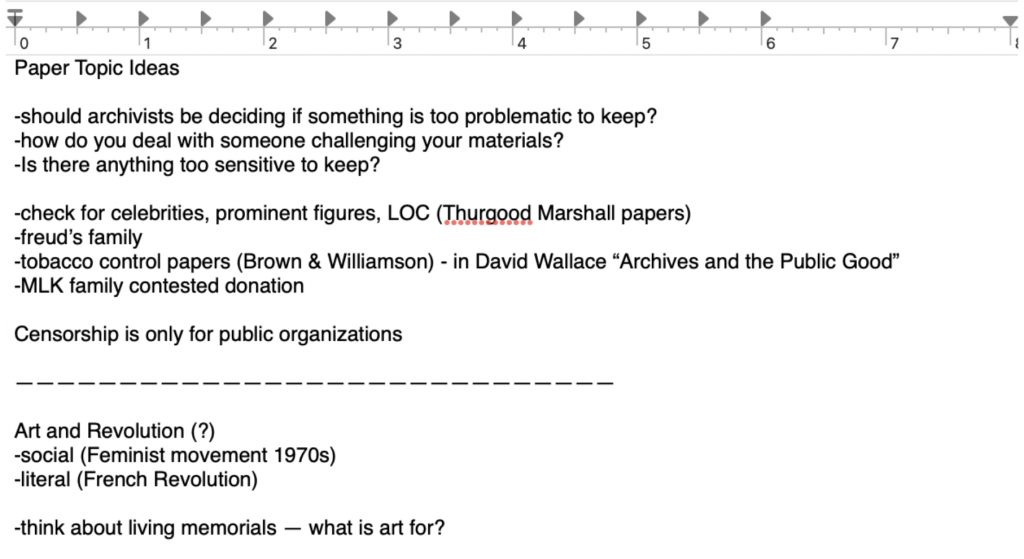
My friends also thought of topics, but they arrived at their ideas in different ways. One of my friends kept coming back to a short paper she had already written, and by talking about it, she discovered that she had much more to say. Another friend talked about something that he felt was conspicuously missing from our class discussions, so he decided that this paper would be a good opportunity to learn more.
All three of us came out of the session with inspiration and initial feedback. This step reminded me of the value of talking through my ideas, especially since my peers could push me to think more deeply about particular questions. Plus, connecting with my classmates through discussion helped me get excited about writing.
Alternatively, I know that, for some people, meeting with friends isn’t always effective; there are also other ways to brainstorm. Sometimes, it helps to talk to someone who doesn’t know about the class or topic—like a Writing Center coach! For others, the note-taking part could be like having a conversation with yourself, which might be all you need. The Writing and Learning Centers also have some great tools for brainstorming if you prefer to work independently.
2) Conduct some initial research
Once I had the beginnings of an idea, I decided to look for sources that could help me narrow my topic. The first place I go to find scholarly articles is the UNC Libraries’ page with “Resource Tools.” At this phase, I like to do keyword searches with Articles+. When you open the advanced search options, you can limit your results to be really specific by choosing a discipline, language, date the material was published, and whether the source needs to be scholarly/peer reviewed. In this case, I used “AND” to limit my results to articles with all of my desired keywords, like: “Sexual material” AND “Archives.” There’s another great article that explains the logic behind this kind of search, which uses Boolean logic.
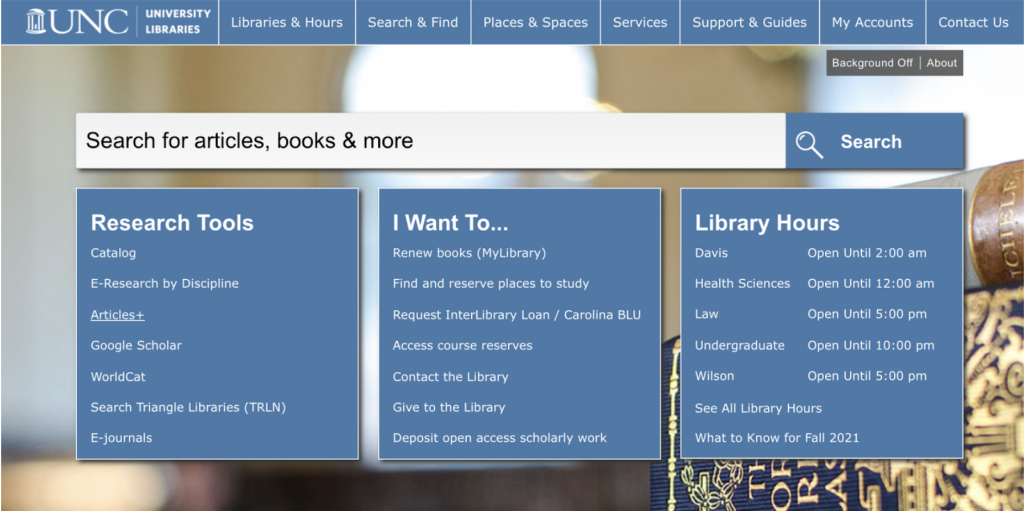
After I’ve combed through relevant results for one search, I’ll usually adjust my keywords to see if anything new pops up. I’ll also see if the best articles (the ones that feel most related to my topic) have been cited by anyone else and whether those articles have something to offer me. I also repeat this process with Google Scholar and with the “E-research by Discipline” option, which will lead me to specific databases for my field.
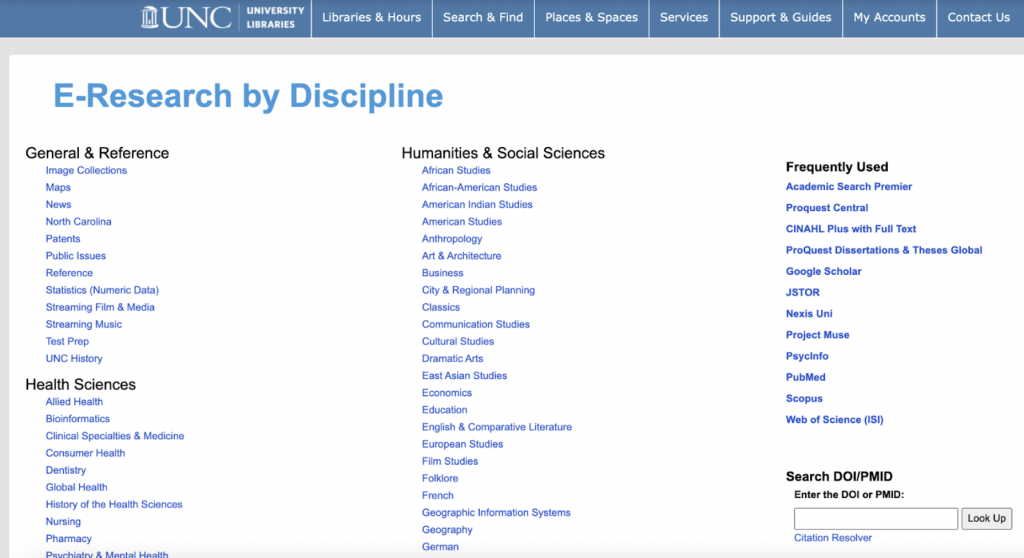
In this case, I used the Information and Library Science option, which took me to the best databases for journals in my discipline. Searching within a discipline allows me to think more carefully about my keywords; I might not have to include “archives,” or “libraries,” for example, because many of the articles are already about archives.
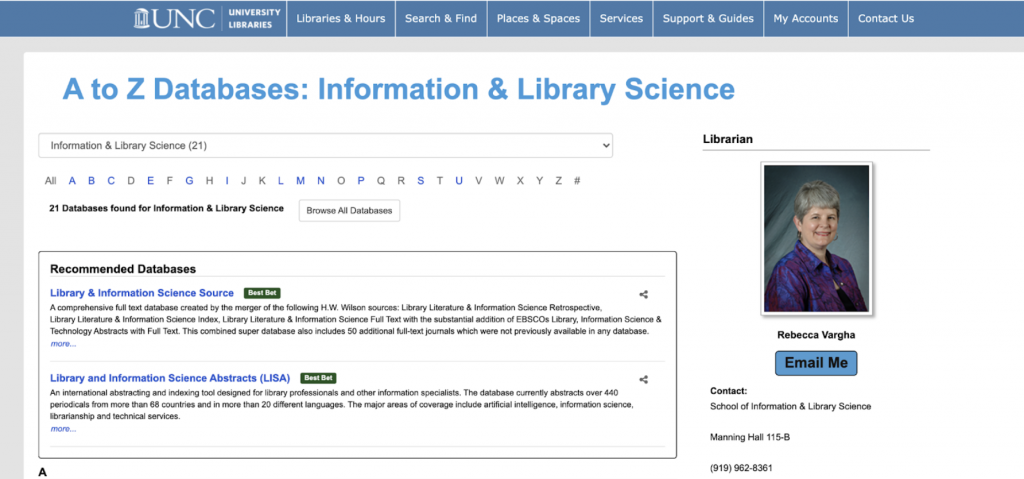
As I’m going along, I like to save any articles that I find in Zotero, a citation manager that I downloaded from the library’s website. Within Zotero, I make a folder for the assignment (“Final Paper”), and it automatically saves all the information I need to quickly go back to the article if I need it. (Note: I first learned about using Zotero from a helpful university librarian, so if you’re new to citation managers, it might be helpful to have a librarian give you a tutorial. You can also read another blog article on using Zotero.)
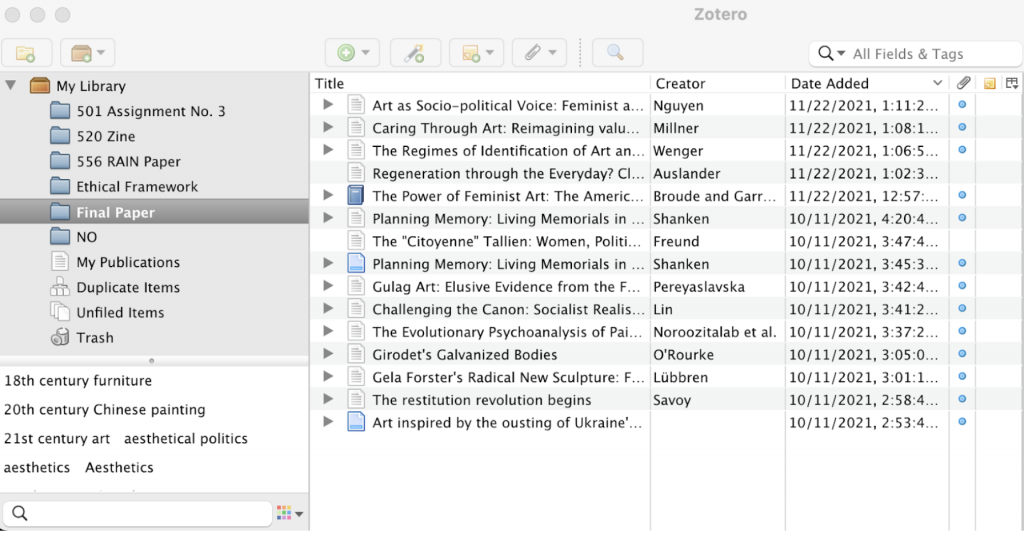
At the end of this process, I usually have a file full of “maybe” sources that I could come back to later. This helps give me an idea of what people have already said about this topic and where I might be able to add to the conversation.
3) Meet with your professor
After I came up with an idea and did some preliminary research, I thought it would be a good idea to check in with my professor during office hours. Since my professor is an expert in the field, I knew she would have a better sense of the context surrounding my research question.
(Note: Sometimes I like to go to office hours before I do any research; getting some expertise at the beginning can make the search process even faster. In this case, my professor encouraged us to find what we could before checking in with her.)
Before the meeting, I read through the abstracts of the sources I had already found in my preliminary research (those were saved in my Zotero library). Based on those, I wrote down some questions that I had about the topic. I met with my professor for about 15 minutes, and in that time, I pitched my question and told her what I had already found. She was able to direct me to some additional books and cases to look at, and I wrote those down to research later.
My professor also encouraged me to post my topic in our class’ Sakai forum. She created a discussion page specifically for final topic ideas so that my other classmates could provide feedback. Often, she said, students with similar topics will find sources that are helpful to each other, so the forum is a good place to share resources. I left the meeting with a strong sense of direction of what I needed to begin the actual writing.
After going through these steps, I felt like I had a good idea of what I wanted to write about and some evidence that could support my argument. Still, because it was such a long paper, I felt like I needed help to get started on the outline and the actual writing process. So, I decided to make a Writing Center Appointment to get my ideas in order and to make a plan for finishing the paper on time. Again, since I’m a person who likes to talk through my ideas, it was helpful to hear another person’s reaction to my topic so far. It also gave me a self-imposed deadline to complete these initial steps.
Breaking down the first few steps of writing my research paper helped me think of it as a list of small tasks to check off instead of one giant, frustrating project. It felt good to accomplish little things that I knew would add up to finishing the whole thing. This process also led me to a topic that really excited and engaged me, so when it was time to do the final step (the actual writing), I was happy to get started.
This blog showcases the perspectives of UNC Chapel Hill community members learning and writing online. If you want to talk to a Writing and Learning Center coach about implementing strategies described in the blog, make an appointment with a writing coach, a peer tutor, or an academic coach today. Have an idea for a blog post about how you are learning and writing remotely? Contact us here.

